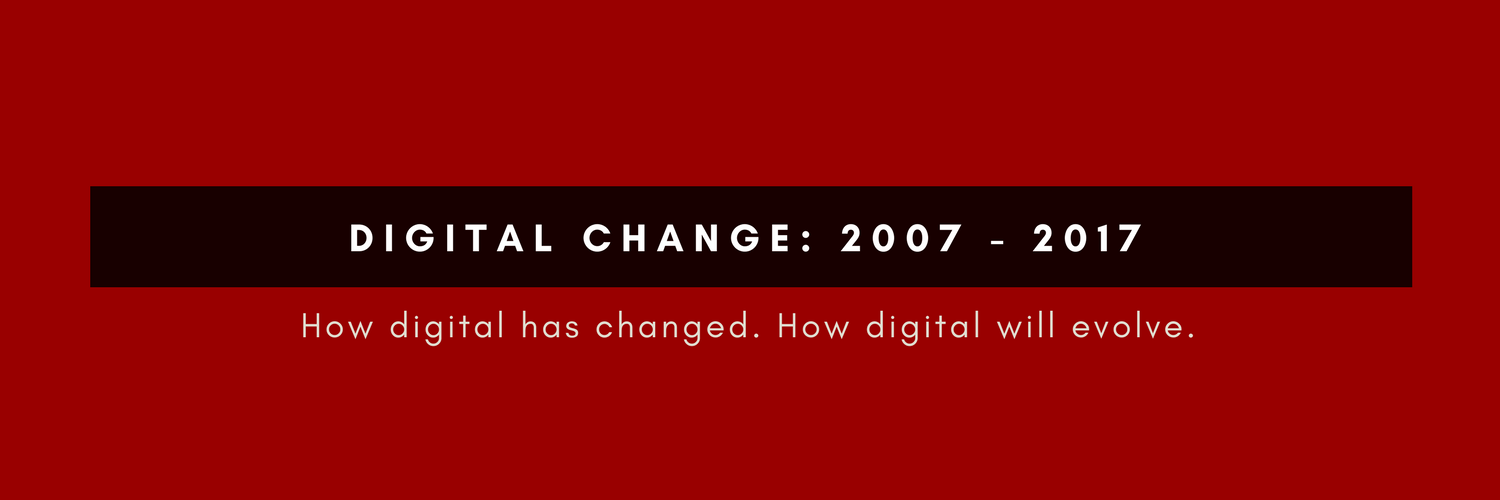 The technical underpinning of the “World Wide Web” have changed. For one, when was the last time you heard reference to the world wide web? When was the last time you typed in www for that matter. The technology used to service the digital world has expanded remarkably as customers flock to digital channels for information, relationships, products, and service. But first, let’s contrast the technology we used to delivery the digital customer experience in 2007. For simplicities sake, we’ll skip anything related to customer service portals and focus on the sales and marketing side with just a smattering of service. We’ll also skip the commerce components because that’s a whole conversation in and of itself.
The technical underpinning of the “World Wide Web” have changed. For one, when was the last time you heard reference to the world wide web? When was the last time you typed in www for that matter. The technology used to service the digital world has expanded remarkably as customers flock to digital channels for information, relationships, products, and service. But first, let’s contrast the technology we used to delivery the digital customer experience in 2007. For simplicities sake, we’ll skip anything related to customer service portals and focus on the sales and marketing side with just a smattering of service. We’ll also skip the commerce components because that’s a whole conversation in and of itself.
Technology Underpinnings in 2007

First Apple iPhone
As I write this list, remember that in 2007 facebook had just 13 million users and the iphone was still the first generation tool running on the 2G AT&T network.
- Web
- http server to deliver the html
- Content management system for authoring and formatting the content
- web analytics tool that delivered page view data and which so few people actually looked to for insight
- Personalization engine which everyone said they wanted and bought but no one actually used
- LDAP of Active Directory for user information
- Application and database servers as needed
- Security
- Firewall with port 80 or 8080 open
- DMZ for the web servers and content delivery servers
- A second firewall where the rest of the corporate network resides and where any servers containing data would reside
- Redundancy
- You wanted to make sure your site stayed up and had a plan for how to bring it back up if there were issues. Most people focused on high availability. Very few thought the site important enough to also include disaster recovery
- Multiple http, database, application, and user respository servers.
- Additional servers for multiple environments
- Mobile: Less related to a mobile phone and more related to the size of your laptop.
- Social: Less related to facebook and more related to the cocktail you might have with colleagues after work
- Marketing Automation: Yes, a few were using email campaign servers but it wasn’t as well used as today
- Virtual Machines: We had at least moved beyond installing everything on the bare hardware. Virtual Machines could be easily moved, copied, and added upon.
Looking back, we thought it was complex and it was. All those technologies added up to upwards of 30 servers at times. It took time and effort to maintain once your business reached a certain size.
Technology Underpinnings in 2017
Now look at what you have today for anyone who treats their digital channel with any level of seriousness. This is a list of what I’ve seen most commonly used at a wide number of my clients in the past year
- Web
- WCM tools are now Digital Experience Platforms. The ascendant vendors then barely exist.
- These tools offer new levels of capability and also offer digital asset management (DAM), forms tools, and built in campaign management functions
- Analytics
- Today, analytics has come of age. Case in point, in 2007, almost no one could make a career of analyzing the web data. Today, one of Perficient’s fastest growing practices is our digital marketing practice. They all eat, live, and breathe the data every single day.
- Web analytics
- Real time analysis tools like hotjar that let you understand what’s really happening on your site and why 1/2 of your transactions stop at step 2 of your process.
- The use of big data warehouses to further analyze the data
- Testing and Personalization
- With the proliferation of mobile channels, we now see a variety of automated testing platforms that run tests of your content and applications on many different phones, tablets, etc.
- A/B or Multivariate testing platforms use the unique nature of digital to test hypothesis in days and push new content, layouts, and labels that influence the productivity of your site
- Personalization engines that deliver contextual and fully personalized experiences because they know who you are on any web or mobile channel
- Marketing Automation
- Campaign Management tools that deliver push messages in email, web, mobile, and social channels
- CRM
- OK, CRM existed i 2007. But it’s now the lynchpin for understanding your customer and delivering a better experience. CRM automates sales, segments marketing, and helps with customer service needs
- It’s the hub for any customer touchpoint
- Mobile
- If your site isn’t responsive or adaptive, you probably noticed a significant decrease in usage
- Almost every company has at least one app for Apple iOS and Android. They may be on the second or third generation of the app(s)
- Social
- social management platforms like hootsuite, salesforce marketing cloud, and sprinklr help deliver messaging and automate customer service across a wide range of social platforms
- Blogs form a core and simple way to connect with existing and new customer
- Artificial Intelligence
- AI promises to automate many of the tasks you see in all the technologies list
- This is a great thing given that using these technologies to deliver great customer experience demands far too many resources. You just can’t hire enough people to make it perfect.
- AI can extend far beyond chatbots but that’s a post for a different time
- Cloud
- So in actuality, almost any of the technologies listed above could be in the cloud but cloud based tools give a fair amount of flexibility and make high availability and disaster recovery much easier.
Bottom Line
So if you noticed, companies spend far more time and effort managing their digital channels. They provide a better experience for their customers across a much wider range of channel. These companies now have more information about what you have done and what you want than they ever had before.
In other words, it’s a far more complex life. I was amazed at one recent customer status meeting as we marched toward the re-platform and re-launch of their website. We had 30 people in the room or on the phone from web, social, mobile, digital marketing / analytics, program, content development, content production, and IT groups.
You hope the effort and expense is worth it.

